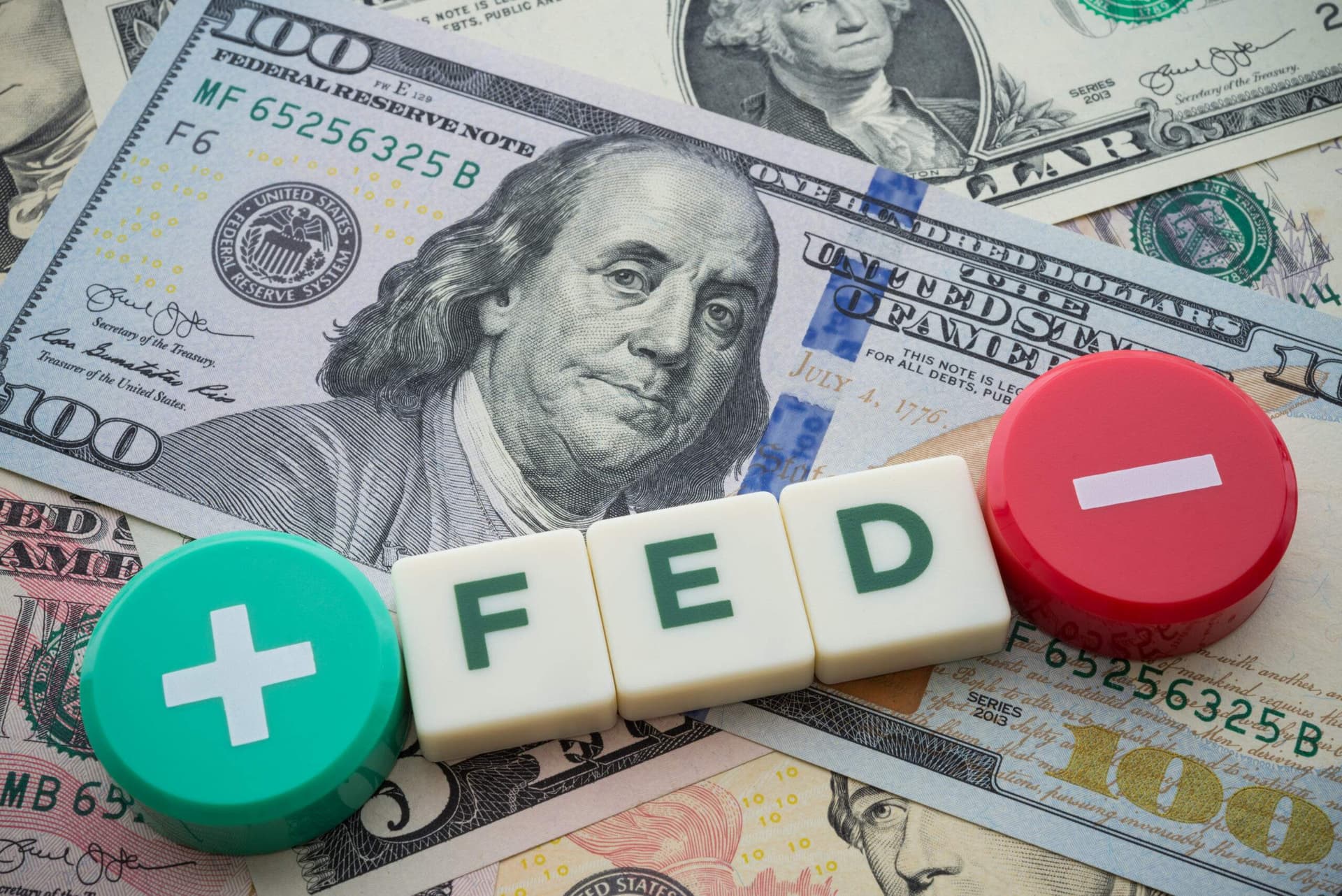Beneath the Surface
How to Protect Yourself From the Tech Bubble Bursting
February 7, 2025 • 7 minute, 24 second read

“Markets have reached a permanently high plateau.”
— Irving Fisher, 9 days before the 1929 stock market peak.
February 7, 2025— The tech crash could start as soon as Monday.
How? By a new development out of China…
That’s a key takeaway from the presentation Jim Rickards made last night…
This event isn’t another version of DeepSeek. It isn’t another round of bickering over tariffs. Rather, it’s about the final phase of the Currency Wars… and this time, it’s winner-take-all. As markets tank, tech stocks will get hit the hardest…

Hopefully, you had a chance to enjoy Jim’s special broadcast from Pentagon City. If you missed out on last night’s broadcast for whatever reason, we’ve arranged for Grey Swan readers to catch a replay here. That’s just one benefit we can offer to our readers thanks to our wide and deep bench of global experts like Jim.
But there’s a lot more for Jim to cover for us… one of the benefits of having a “wide, deep bench,” as they say in sports.
In the January Grey Swan Bulletin, we warned paying members about the dangers that the stock market poses today.
Systemically.
The entire global financial system is at risk. Specifically, enthusiasm for AI stocks in U.S. markets is driving high-tech stocks. A collapse in those stocks could rival any bust we’ve seen — the .dotcom bust, the financial crisis of ‘08.
This week provided a cold glass of water in the drunken face of Wall Street… and some subtle opportunity if you know where to look.
Earnings from Google and Amazon were particularly telling.
Like Microsoft the week prior, all three companies reported a slowdown in their cloud-based services. Following their earnings reports, all three took a dive.
Why the selloff over cloud spending? Well, think about what cloud services are basically: web hosting and file sharing, the kind of data being thrown around that should be going into overdrive with the rise of AI.
In other words, as a news flash for those who still see an unstoppable runaway AI boom: It ain’t happenin’. At least, not as fast as the market bulls predict. And that could be enough to take down tech stocks and with them, the market.
We’re not alone in that analysis. Our good friend, honorary Grey Swan Investment Fraternity member, and publishing colleague Jim Rickards see the same danger in tech stocks that we do.
And he sees a growing global trade war as the catalyst that will finally take down the bull market.
Hopefully, you had a chance to enjoy Jim’s special broadcast from Pentagon City. If you missed out on last night’s broadcast for whatever reason, we’ve arranged for Grey Swan readers to catch a replay here.
In that presentation, Jim covered three key concepts:
- Jim showed why the Final Phase of the global financial war has just begun (and why a recent action taken by President Trump could be set to end this war once and for all).
- Next, Jim showed you exactly what that means for your investments, your gold holdings, your cryptocurrency, and even the dollars you hold in the bank.
- Finally, he revealed his proprietary CIA-based timing tool that I helped him develop and implement over a decade of behind-the-scenes work, which could generate returns of as much as 1,000% or more over the next year from the Final Phase of the global financial war – all in a way that risks less money and can hand out FAR higher profits than the way most people trade stocks.
Jim’s views on currency developments and global economics largely coincide with our own, and already inform the model portfolio we run in the Grey Swan Investment Fraternity.
Today, we’ll also add Jim’s views on a bubble in tech stock to that list. ~ Addison
CONTINUED BELOW…
If You Missed Last Night’s EventIf you didn’t receive your access link at 7pm ET last night, I’ve just posted this limited replay for you: But hurry, my contact expects the final phase of the global financial war to start on Monday. — Addison |
CONTINUED…
How to Protect Yourself From the Tech Bubble Bursting
Jim Rickards, Daily Reckoning
In the 1920s, Radio Corporation of America (RCA) was the hottest stock in the world.
Radio was cutting-edge tech, and RCA was dominant in the sector. The company was the largest manufacturer of radio sets and operated the largest broadcasting company, NBC. They owned key patents and had attracted many of the country’s best engineers.
In 1921 RCA shares traded as low as $1.50 (split-adjusted). By 1929 RCA rose to a peak of $549. A 352x return.
At its highs in 1929 RCA was trading at a P/E of 72x. Speculation had driven the price far beyond rational levels.
The bubble popped in 1929, and by 1932 RCA shares were trading at $15. That’s still a 10x return over 11 years, but the majority of investors had bought in at much higher prices. The use of margin borrowing was commonplace, and added fuel to the fire (sound familiar?).
Of course, we also saw a similar mania during the dot-com bubble. Cisco, Intel, and a few other tech leaders soared to unimaginable heights, then crashed back down to Earth.
You could say RCA was the Cisco of the Roaring ‘20s. And possibly the Nvidia of its time.
Is DeepSeek the Pin?
China’s new AI model DeepSeek R1 has the potential to be the pin that pricks the AI bubble. But it hasn’t happened yet.
On Monday, Jan. 27, Nvidia shares fell 17% after the market had digested China’s AI developments.
But yesterday shares rebounded by almost 9%. The dip was bought, for now at least.
I don’t know if this Chinese AI model will be the catalyst that ends the AI mania. But the bubble will inevitably end.
The market is poised for a crash, it only requires the right catalyst. Something frightening. A bank run, financial crisis, war, or even an AI breakthrough from our primary competitor.
Whether this latest Chinese AI model is that catalyst remains to be seen. But the 17% one-day drop in Nvidia shares does demonstrate that this market is easily spooked.
Profits (and Risks) Concentrated
The rise of AI in America has severely concentrated market risk. Even before the AI boom, markets were already heavily tilted towards big tech.
Today it’s far more pronounced. Anyone investing in the S&P 500 has more money in the Mag 7 stocks than they do in the bottom 400 companies put together. These 7 big tech firms make up about 34% of the entire S&P 500.
This is what happens during bubbles. A handful of companies dominate the market.
Make no mistake, these periods are driven by real advances. But they inevitably get out of control. It has happened with every major technological development. Railroads, internet, crypto, and now AI.
Anyone who has studied manias can clearly recognize the signs. Problem is, it’s difficult to know exactly when it will end. But judging by the market’s recent action, we’re getting closer.
Go Analog to Hedge Digital
If you own almost any American stock market index, you likely have plenty of exposure to Nvidia, Microsoft, Google, Amazon and the rest of the Magnificent 7.
Now is not a time to jump into these names as the tech sector remains vulnerable. I much prefer to buy areas the rest of the market is ignoring. Gold, silver, miners, oil and gas, residential real estate. Hard assets.
Despite all the hype around this tech cycle, we are still entering a hazardous monetary period. The U.S. and much of the world have entered into debt spiral territory. Once debt/GDP broaches 120%, as it did recently in the U.S., it almost always leads to a debt or monetary crisis. Even in a best case it leads to a prolonged period of slow growth, which is also poison for stocks.
AI is powerful, but it cannot save us from mathematics. So if you don’t have any, go buy some hard assets. The easiest place to start is gold and silver coins. I suggest that everyone should have 10% of their portfolio in these assets. They remain the ultimate diversifiers.
~ Jim Rickards, Daily Reckoning
Regards,

Addison Wiggin,
Grey Swan
P.S. If you missed it, you can still catch Jim’s latest briefing from Pentagon City, just click on this link.
We personally worked with Jim a decade ago to get his Currency War trading strategy off the ground. In last night’s event, Jim warned of a treacherous development he expected would ignite the final phase of the currency war. Rickards reveals significant developments he is confident will begin on Monday. For details, click here.
Please send any comments you have to addison@greyswanfraternity.com




